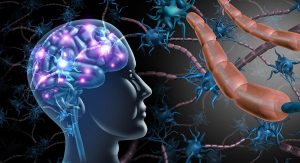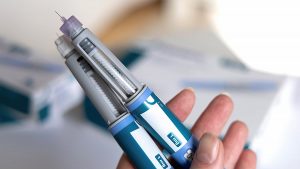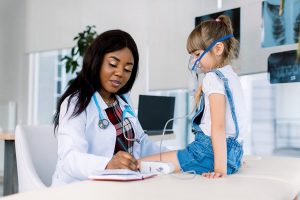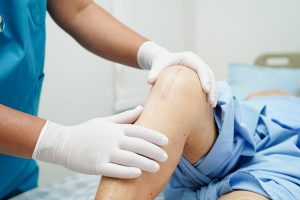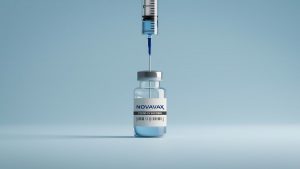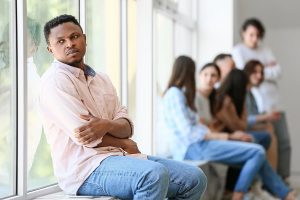(HealthDay News) — As states across America move through the early phases of reopening their economies, the nation’s top infectious disease expert plans to issue an ominous warning during a Senate hearing on Tuesday: Open too quickly, and “needless suffering and death” will follow.
Dr. Anthony Fauci is one of four top health officials who will testify remotely before the Senate Health, Education, Labor and Pensions Committee, the New York Times reported.
“The major message that I wish to convey to the Senate HLP committee tomorrow is the danger of trying to open the country prematurely,” he wrote to a Times reporter late Monday night. “If we skip over the checkpoints in the guidelines to ‘Open America Again,’ then we risk the danger of multiple outbreaks throughout the country. This will not only result in needless suffering and death, but would actually set us back on our quest to return to normal.”
Fauci is one of three top health officials who have begun to quarantine themselves after being exposed to two White House aides who have been diagnosed with COVID-19.
The other officials are Dr. Robert Redfield, director of the U.S. Centers for Disease Control and Prevention; and Dr. Stephen Hahn, commissioner of the U.S. Food and Drug Administration, the Washington Post reported.
Fauci said Sunday that he was told his exposure risk was low, and that he plans to wear a mask at all times in public but will not completely isolate himself because he needs to attend certain meetings at the White House and work at the National Institutes of Health, the Post reported. He will be tested every time he goes to the White House.
All three officials are members of the White House coronavirus task force. So far, President Donald Trump and Vice President Mike Pence have tested negative for COVID-19, the White House said.
As of Tuesday morning, U.S. coronavirus cases have topped 1.3 million and the death toll passed 80,000, according to the Times.
Serious inflammatory condition seen in some kids with COVID-19
Meanwhile, troubling news has emerged from New York City: Mayor Bill de Blasio said Sunday that 38 children in the city had contracted a new, serious inflammatory syndrome that seems to be linked to COVID-19 infection. Three of those patients, two grade schoolers and a teenager, have died, the Times reported. None of them were known to have any preexisting condition.
Just last Monday, the city health department warned of 15 of these cases in a healthcare provider alert, and state officials are investigating 85 more potential cases, the Times reported.
A small number of cases have been reported in other states, including California, Louisiana and Mississippi, the Times reported. At least 50 cases have been reported in European countries, including Britain, France, Italy, Spain and Switzerland.
These troubling developments came after more bad news on the economy last week.
On Friday, the federal government’s monthly jobs report showed a staggering 14.7 percent of Americans are now unemployed.
A total of 20.5 million jobs were lost during the country’s April lockdown, and not since the Great Depression has the unemployment rate been so high, the Times reported Friday.
That was not the only bad economic news delivered in recent days: On Thursday, the weekly jobless claims report showed that another 3.2 million jobless claims were filed last week. That brought the total unemployed since the nation’s economy was first curtailed by social distancing measures in mid-March to a historic 33 million.
Health cost of reopening could be high
While reopening parts of the U.S. economy will undoubtedly start to help some Americans get their jobs back, an internal report from the Trump administration predicted that reopening will come at a cost: 200,000 new coronavirus cases and 3,000 deaths every day by the end of May.
Troubling predictions came from more than one source: A forecasting model from University of Washington researchers also raised its projections to more than 134,000 American deaths from COVID-19 by early August, the Times reported.
All of the numbers illustrate a grim fact: Even though the country has essentially been in lockdown for the past seven weeks, the coronavirus prognosis hasn’t really changed.
Still, at least 27 states have loosened at least some social distancing restrictions, a new Kaiser Family Foundation analysis shows.
Even as reopening plans proceed, a new poll shows that many Americans oppose the reopening of restaurants, retail stores and other businesses.
A Post-University of Maryland survey, released last week, found that many Americans have been making trips to grocery stores and 56 percent say they are comfortable doing so. But 67 percent say they would be uncomfortable shopping at a retail clothing store, and 78 percent would be uncomfortable eating at a sit-down restaurant.
Meanwhile, a new analysis finds inadequate levels of testing for the coronavirus in 60% of states, many of which are reopening after weeks of lockdown.
The analysis, conducted by the Associated Press, uses a 2% testing rate per month — a rate advised by federal officials that many public health experts still feel falls short.
Promise of remdesivir, vaccine by January
There has been one note of good news: The U.S. Food and Drug Administration has approved emergency use of the first drug that seems to boost recovery among COVID-19 patients.
Remdesivir, Gilead Sciences’ intravenous antiviral medication, is to be used for hospitalized patients with “severe disease,” such as those who need supplemental oxygen or ventilators to breathe, the AP reported.
The FDA based its decision on the results of a government study that showed remdesivir shortened the time to recovery by 31% for COVID-19 patients in the hospital, the AP reported.
The search for a vaccine also got some welcome news. The White House has announced an initiative to produce a COVID-19 vaccine that could be available nationwide by January.
Trump has said it is not too optimistic to try to produce roughly 300 million doses of vaccine in eight months, enough for all Americans, the Post reported.
Even the shorter timeline still means there would be no full protection from the new coronavirus until after most Americans are likely to have returned to work or school.
To reopen or not to reopen
Meanwhile, social distancing orders remain a patchwork across the United States, with some states reopening and other holding off until at least mid-May.
On Monday, New York Gov. Andrew Cuomo said that three upstate regions of his state might partially reopen this weekend, but New York City will probably not be able to reopen until June.
State officials have laid out a plan under which each of 10 regions must meet thresholds in seven health-related areas before any reopening could begin. The areas that has met those benchmarks, he said, were the Finger Lakes, which includes Rochester; the Southern Tier, which borders Pennsylvania; and the Mohawk Valley, west of Albany, the Times reported.
But New York City has only met four of the seven benchmarks, Cuomo added, Mayor Bill de Blasio said that nonessential businesses in the city would probably stay closed until at least June, the Times reported.
In preparation for reopening, the state will implement the “most aggressive” antibody testing program in the country and has issued an executive order requiring all New Yorkers to wear a mask or face covering when they cannot maintain social distancing in public, CBS News reported.
According to a Times tally, the top five states in coronavirus cases as of Tuesday are: New York with over 342,000 cases; New Jersey with nearly 140,000; Illinois with more than 79,000, Massachusetts with more than 78,400; and California with over 69,500.
Nations grapple with pandemic
In Asia, where the coronavirus first struck, several countries are finally returning to a new normal but clusters of cases have been cropping up.
In China, a total of 14 new cases were reported on Saturday, including one in the city of Wuhan, where the coronavirus pandemic first began late last year, the Times said.
On Monday, Chinese officials said they plan to test all 11 million residents in the city by the end of next week in the hopes they can extinguish any remaining cases of coronavirus from the pandemic’s original epicenter, the Post reported
Meanwhile, South Korea ended its stringent social distancing policies last week after halting the spread of coronavirus. But after new cases were discovered, health officials ramped controls back up. The country reported 34 new cases on Sunday.
Elsewhere, the situation remains challenging. On Tuesday, the United Kingdom’s coronavirus death count passed 32,000, the second-highest in the world, according to a Johns Hopkins University tally. Britain has now surpassed Italy, Spain and France for COVID-19 deaths in Europe.
Prime Minister Boris Johnson announced in a televised address on Sunday that the country will impose a mandatory two-week quarantine on travelers arriving by air, to try to avert a new wave of infections after the government slightly relaxed the rules of the country’s seven-week lockdown, the Times reported.
But British soccer fans did get a bit of good news on Monday when the government announced that the English Premier League, the world’s richest confederation of soccer teams, may resume its season June 1, albeit amid heavy restrictions, the Post reported.
Brazil looks like it could become the next hotspot in the coronavirus pandemic. By Tuesday, the South American country had reported more than 11,600 deaths and more than 169,500 confirmed infections, according to the Hopkins tally. But the true numbers are believed to be vastly higher.
Cases are also spiking in Russia: As of Tuesday, that country reported the world’s second-highest number of COVID-19 cases, the Hopkins tally showed. Russia now has 232,243 cases, leapfrogging both Britain and Spain. Only the United States has more cases.
Worldwide, the number of reported infections neared 4.2 million on Tuesday, with more than 286,600 deaths, according to the Hopkins tally.
More information
The U.S. Centers for Disease Control and Prevention has more on the new coronavirus.
Copyright © 2025 HealthDay. All rights reserved.










